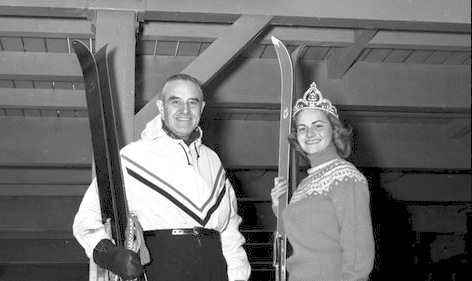
The above photo is of NYS Governor Averell Harriman dedicating Whiteface Mt. Ski Center and skiing during the same day. The woman with the crown is local figure skating coach, Priscilla Hill, who taught figure skating with the Skating Club of Lake Placid in the 1950's and '60's.
I remember the day well: January 25, 1958. Whiteface Mountain Ski Center was officially opened by Governor Averell Harriman amidst great pomp and circumstance and a throng of local ski enthusiasts.
Seriously, I was only four years old and I sort of remember moments from that day. I have relived it many, many times over the years via my father’s extensive slide collection, so maybe that’s actually what I’m remembering. You see my father, Carl Ortloff, was one of the pioneers of local alpine skiing in the late 30’s and early ‘40s. He was one of the earliest members of the National Ski Patrol (he was registered in the #320 spot in the nation - NSP is now issuing numbers higher than 252,000) He was also the first leader of the Lake Placid Ski Patrol (see photo below). and a founding member of the Lake Placid Ski Council. Some of our earliest local ski promoters were on some of the same lists as well - Ron McKenzie (later President of the 1980 Lake Placid Olympic Organizing Committee), Loren Wrisley (a local ski manufacturer whose skis are now highly collectible), Bill Hovey (local ski instructor and ski shop owner), and several others. It’s thanks to these early pioneers that we are lucky to have the current Whiteface Mountain Ski Center in our backyards.
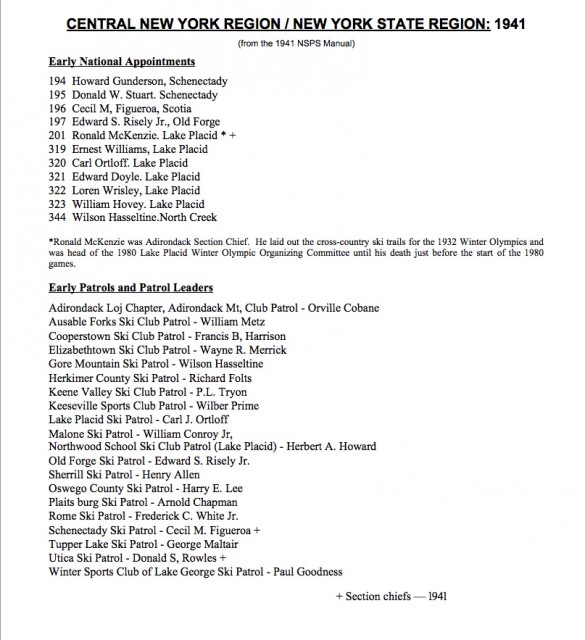
Whiteface Memorial Highway
Whiteface Mountain’s early days date back to the 1920’s. The approval and construction of the Whiteface Mt. Memorial Highway played a significant role in local downhill skiing. A constitutional amendment allowing the highway to be built on Forest Preserve land came via legislative approval followed by a successful statewide voter referendum in 1927. It would be another eight years before the highway opened. When opened, the highway provided a means of easier access to higher elevations for skiing. The highway (8 miles long) was jokingly referred to as the longest beginner ski trail in the state, due to its 8% average grade.
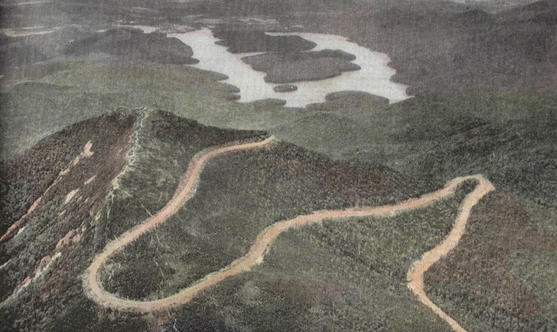
During the 1930’s rope tows began to appear around the region. The 1932 Olympics had generated a great deal of interest in alpine skiing even though it was not a sport during the early games. Wilmington became an established area of alpine skiing during this time, although no formal ski area was established yet. In 1938, 2700 feet of an old logging road was cleared along the route of the current Wilderness Trail, but no additional clearing was allowed. The trail was soon certified as New York’s very first Class A racing trail and a handful of competitions were held on it. My dad was one of the racers who competed on this trail. Reaching this trail entailed hiking to the top and climbing back after each run. Think about it - 2700 feet of trail to climb, and that’s AFTER climbing to the base of the trail! Yes, they loved skiing enough to do this several times a day in deep winter snows. Early skiers were a dedicated bunch.
Marble Mountain
At that time, Marble Mountain, off the Memorial Highway, had been established with rope tows and a t-bar on five trails. A short time later additional trails were established near the highway’s Wilmington turn, with two more rope tows. The trails were connected at the Wilmington Turn on the highway, giving access to both areas from the same spot. The highway allowed sno-cats and surplus army vehicles to transport skiers. Skiing was also allowed on the highway itself. Problems, including weather issues, seemed to plague the Marble Mountain site, and it had problems with financial solvency as well.
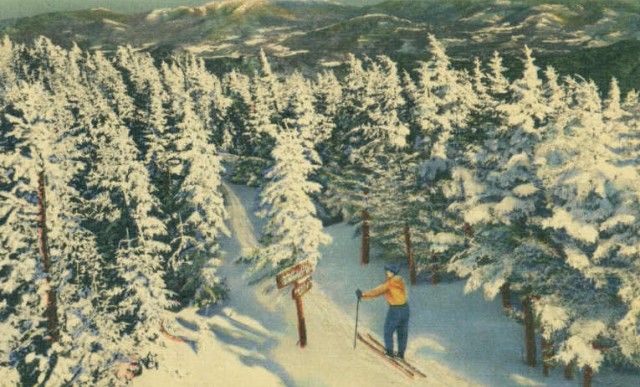
December 7, 1941
In November of 1941, the State of New York amended the Forever Wild provisions in the state constitution to allow construction of a ski center on Forest Preserve land located on the Southeast side of Whiteface (Little Whiteface). My dad told the story frequently of helping to cut the aforementioned racing trail on Little Whiteface in the late 30's, along with Hal Burton, Herman "Jackrabbit" Johansen and a few other local men. Another much-repeated story by my dad was about the building of the first shelter for racers at the top of the same trail on a cold and blustery December day in the early 40’s. He and a group of local men, including Ron Mckenzie, "Kahki" Lamb, Ed Doyle, Loren Wrisley and others, spent that Sunday on the mountain cutting logs and constructing the shelter. They headed back to town at the end of a long day to have a couple beers at The Majestic Restaurant in Lake Placid. When they entered the establishment there was a dark and somber mood overshadowing the normally boisterous atmosphere. That day was December 7, 1941. They had returned to town that afternoon to learn of the bombing of Pearl Harbor by the Japanese. The 'frivolous' job of constructing ski trails for recreation took a ‘way-back’ seat to the world events now at hand. Nothing more was done about the ski center until after World War II.
Ski area
In the early 50s Averell Harriman (who had spearheaded the creation of Sun Valley resort) met with Art Draper, the manager of Bellayre Mountain whom he had earlier befriended. They convened to talk about Marble Mountain, to discuss its pros and cons, and to talk about a location for another possible New York ski area. They came to the conclusion that the location of today’s current ski area was the most feasible and began the legwork to have the “Forever Wild” provision in the constitution amended to allow construction.
In 1957 construction of the ski center began in earnest and on January 25, 1958, then Governor Averell Harriman made the dedication and opened the double chairlifts to the public. It was a monumental day for skiing in the Wilmington/Lake Placid region. Our family friend Natalie Leduc grew up in Lake Placid in a family of skiers. She remembers attending the opening day and tells of the lift breaking down while Averell Harriman and Art Draper, now the manager of the new Whiteface, were riding it. Everyone of any authority were in a complete panic that the Governor was stuck on a chairlift on opening day. Natalie had been skiing down the mountain and fell just at the moment she was skiing under the governor, who was still stuck on the lift. She slid for a long way before stopping herself. She remembers it being one of the most embarrassing moments of her life!
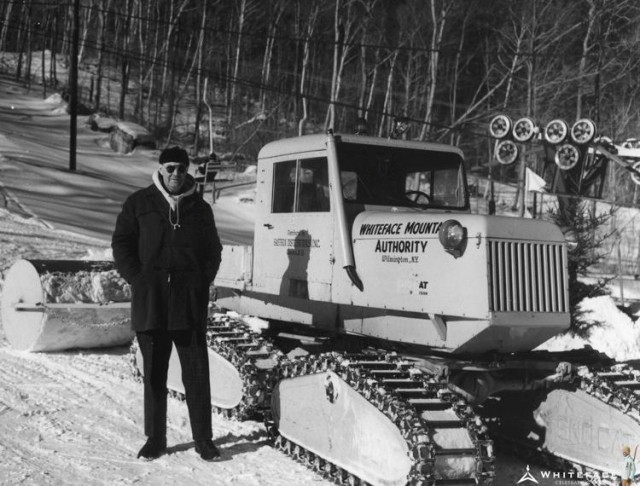
Fawn Ridge - ski area of the past
My Dad insisted that we all learn to ski at a very early age (I think I was about 3), packing the small hill in our back yard and hiking up and skiing down. We graduated to hiking through the woods to Fawn Ridge which was located on the hill behind the current Lake Placid Center for the Arts. I was little and it wasn’t easy. Trying to carry skis and poles through the deep snow in the woods, while constantly dropping them and sitting down to cry was something I’ll never forget. My brothers were very patient with me and always got me up and got me going again. We so wanted to ski we’d endure practically anything to get there when a ride wasn’t available.
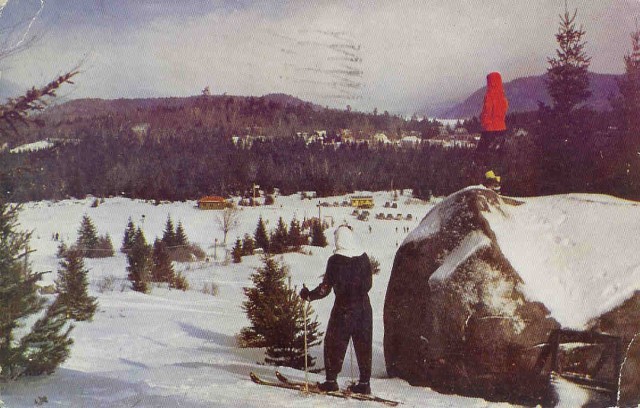
Dream Hill
There were also days skiing at Dream Hill with its rope tow at the Mirror Lake Inn, where my best friend Cathy’s father, Fred Richards, was the chef and an excellent skier. After alpine skiing was introduced to the area, Mirror Lake Inn set up the first “rope-tow” – powered by electricity – on Dream Hill behind the Inn. In the late 40s, the first snowmaking machine ever seen in this area was purchased by the Inn to ensure proper ski conditions on Dream Hill. My memories of the rope tow involve wool mittens. Our wool mittens were always freezing to the rope and as soon as we let go of the rope, our mittens would be snatched off our hands and we’d watch them go sailing around the cog wheel at the top and we’d wait nearby to snatch them back off the rope as it went by us on the way down.
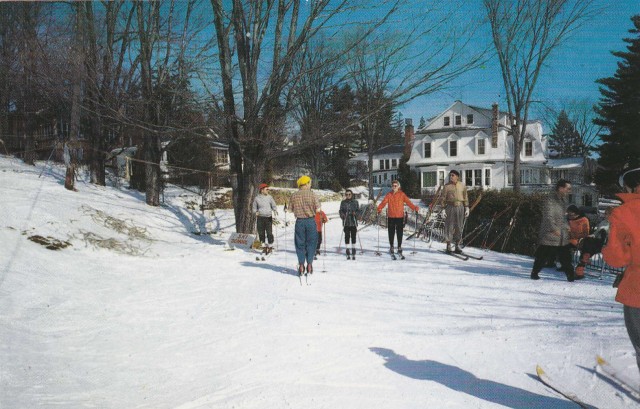
Scotts Cobble
Soon we were taking the bus after school to Scotts Cobble (located adjacent to Craig Wood Golf Course) for daily lessons with Laura Viscome and Tony Matt, thanks to the Youth Commission Ski program. I remember riding the bus over the bumpy dirt road into the ski center with our skis all piled in the back in the middle of the aisle, crashing and banging as we bumped along the road. I won a bunch of ribbons competing in weekly kids’ ski races at that hill. Unfortunately, my Dad seriously injured his knee skiing late in the 50s and was never able to alpine ski again. Knee surgeries were not done in those days. Sadly, I was never able to ski with him at Whiteface.
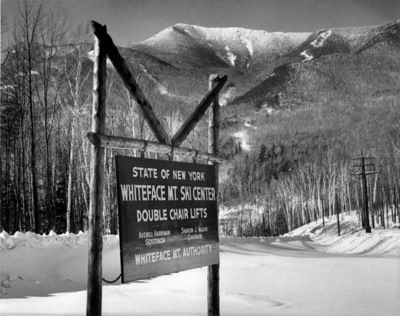
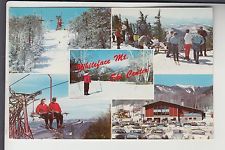
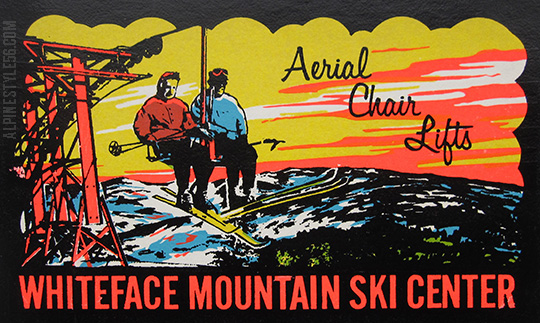
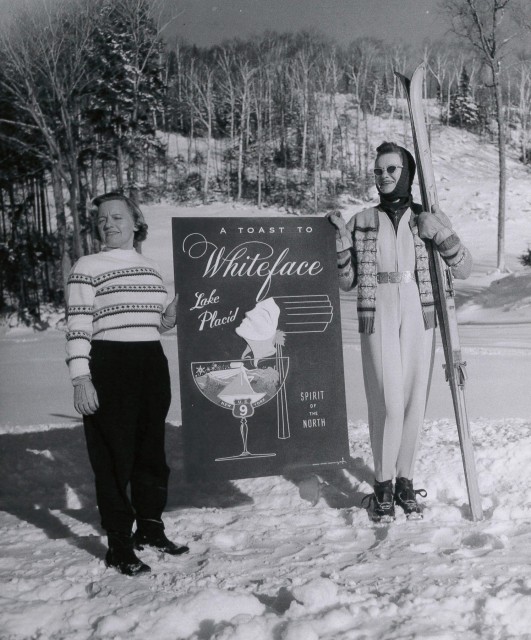
Whiteface Mountain
Whiteface Mountain Ski Center has had a long and storied history, playing host to an extensive list of international competitions over the years, including the alpine events of the 1980 Olympic Winter Games. World Cup action in Freestyle skiing takes place in January each year, with the 2015 event being scheduled for January 29 - 31. From its humble beginnings on Marble Mountain, Wilmington and Whiteface now boast 22 miles of trails (87 trails), 314 acres of skiable terrain on three peaks, as well as the highest vertical drop (3,430 feet) east of the Rockies. The 87 trails are serviced by a gondola, 9 chairlifts and 1 conveyor lift. To supplement the annual average snowfall of 230 inches, an artificial snowmaking system now services 98% of the skiable terrain. In addition, when the weather and snow depth is right, Whiteface offers over 1,250 feet of some of the most challenging terrain in the East, The Slides. Open usually only late in the season due to conditions and avalanche danger, The Slides contain natural hazards such as rocks, cliffs and waterfalls with a slope averaging around 40 degrees.
Whiteface also offers an entire separate lodge and ski area for kids. Kids’ Campus offers its own ski school and a “magic carpet” for the little tykes who are just learning to ski. It is separated from the main slopes (but accessible for parents to ski in and ski out from the other slopes), and has its own parking lot, cafeteria and day care center.
Celebrating its 56th continuous year of operation, it has survived the closing of most all the smaller ski areas in the vicinity - Paleface in Jay, and Scotts Cobble, Fawn Ridge and Mt. Whitney in Lake Placid. However, Saranac Lake still boasts Mt. Pisgah, and Big Tupper still operates in Tupper Lake - both great family ski areas.
Come see what it’s all about at Whiteface this winter. Put together a ski package and spend a few days close to the mountain in Wilmington. Learn to ski or hone your skills with a lesson or two or just enjoy this spectacular mountain!
And, as they say, the rest is history.
